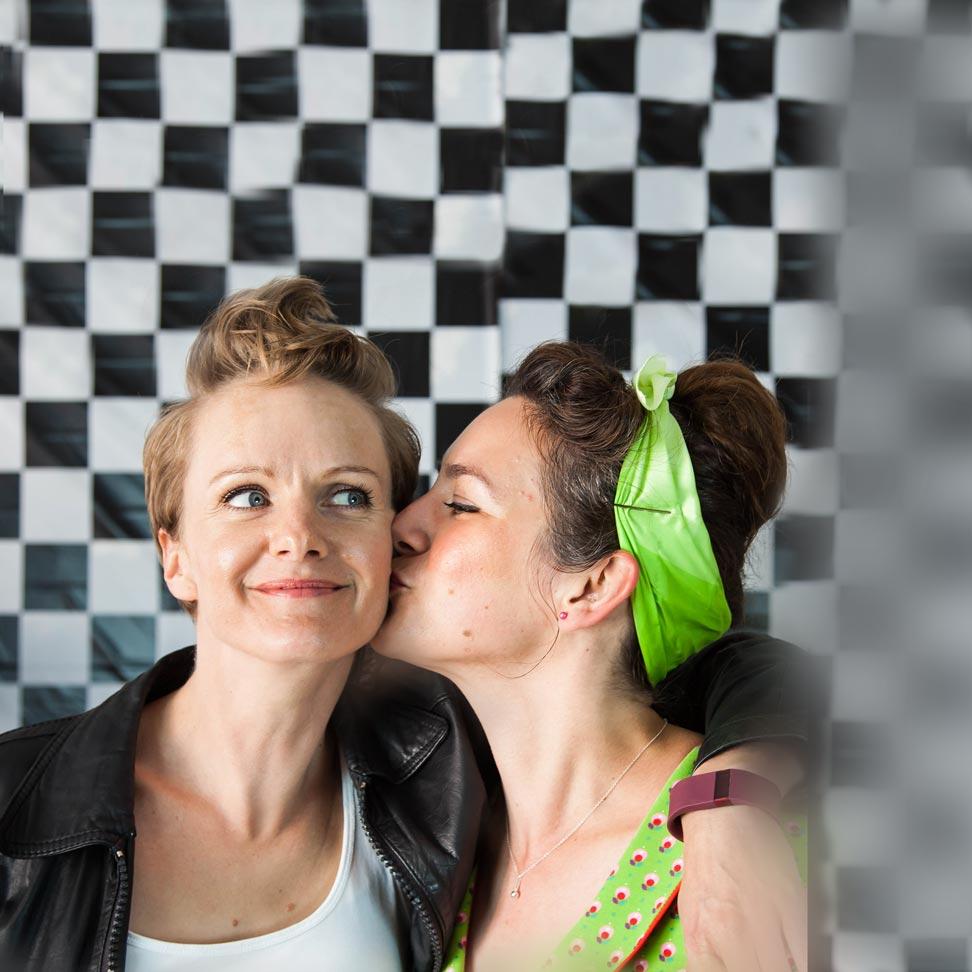In the wind-swept North Atlantics, between the rugged wonderlands of Scotland’s Outer Hebrides and ever so happening Iceland, protrudes a cluster of dream-like and largely untouched isles: the Faroe Islands. While small and remote, their dramatic landscape is the stuff of fantasy novels – a merciless and unpolished primeval panorama that compliments the warm-hearted and shy demeanour of the Faroese people. The theatrical scenery, let alone the distinctive Faroese culture, make the Faroe Islands a must-add to any self-respecting bucket list.
Faroe Islanders: Vikings by nature, tender by heart
Faroe Islanders giving it all they’ve got at their cherished boat race © Ólavur Frederiksen & Visit Faroe Islands
Does towering basalt rocks and nothing but the seemingly endless Atlantic Ocean in sight sound like home away from home? It did to the Norwegian Vikings when they first hit Faroese shores back in the 9th century and decided this bundle of volcanic islands were the perfect place to settle down. When you consider the strong-willed, self-reliant yet laid-back mindset of today’s Faroe Islanders, their Viking ancestry comes as no surprise.
The Faroese have their own distinct ways of life, and whether it’s their cherished chain-dancing accompanied by vocal ballads, their notorious fermented meats, or the much-praised national sport, the boat race, they manage to keep tradition very much alive.
While the world is busy syncing devices and habits, this small community has maintained its old-school flair. The grass-roofed houses are mowed by sheep, naturally, and the islands have a total of just three traffic lights, all located in the capital of Tórshavn. The Faroese have managed to keep their feet steady on the ground and maintain a close-knit relationship with nature. They’re skilled and passionate fishermen, have a nose-to-tail approach to cooking, and know their rocky surroundings by heart.
Don’t leave us alone with the sheep
Faroese sheep standing rocksteady, they oddly manage to climb even the steepest of terrains
Spanning across 18 islands of dramatic cliffs, verdant valleys and treeless moorlands, the Faroese nature is as challenging as it is awe-inspiring. The islands are separated by narrow sounds and fjords, and count a total population of just below 50,000 people, spread across 17 of the islands. One of these, the island of Stóra Dímun, is home to just seven people. Despite the geographical remoteness, the islands are surprisingly accessible – a mere two-hour flight from several of Northern Europe’s major cities.
Heaps of sheep freely roam the islands. They’re as essential as the cliff-sides they’re clinging to, and they’re literally everywhere – even hanging on to the steepest of rock faces. No one knows how they do it, but they’re said to seldom fall off.
Some islands are accessible by bridges or tunnels, others only by ferry or helicopter. While travelling by helicopter might sound like an extravagant solution, prices are a lot friendlier than you would think, and it is actually an excellent way of commuting to remote locations like the beautiful island of Mykines. Mykines is recognised for its diverse bird population, including gannets, fulmars, puffins and oystercatchers, the Faroese national bird.
Slicing through a rocky wonderland, one road at a time
Man walking with his surfboard by the village of Saksun © Sergio Villalba & Visit Faroe Islands
Weaving through natural grasslands, and alongside soaring cliffs and staggeringly steep crags, the Faroese roads are as made for road tripping. Distances are small and itineraries redundant – hang loose and cruise through valleys and little villages, going wherever your heart takes you.
The sea is never more than a few minutes away. Just follow the main road and venture down some of the side roads to discover shores, hills and valleys scattered with little villages and multi-coloured, turf-roofed houses.
Soaking up a bit of sun in the peaceful village of Gjógv
A local favourite is the idyllic village of Saksun in the northern part of the Streymoy island, with its little black-tarred houses and a gorgeous lake that borders the ocean. Also, don’t miss the village of Gjógv at Eysturoy island, featuring the most graceful natural harbour you will ever see.
Lake Leitisvatn and the Trælanípan cliff where dreadful deeds used to go down
Another must-see is the spectacular waterfall, Bøsdalafossur, plunging from the lake of Leitisvatn directly into the ocean. Despite its magnitude, it’s somewhat of a hidden gem – getting there and back is a 5km trek, and takes about two hours. Park your car at Miðvág village and follow the road to the right of the church leading to the old Ovaragøta pathway. It takes you to the waterfall and majestic Trælanípan cliff, from where debilitated slaves got dumped back in the old days.
Just a man and his boat, what more do you need?
Sailing with local fisherman Magni Blástein is an incredible experience © Magni Blástein
Fishing is a subject of immense local passion, and the Faroese are always generous about passing on their advice. A trip with a local fishing boat is a remarkable experience, giving you the opportunity to see the grandiose landscape from the seaside and to witness first-hand one of the most vital components of Faroese culture.
For the ultimate adventure, book a trip with local fisherman Magni Blástein, operating a small fishing boat from the town of Vestmanna on the main island of Streymoy. Navigating in between islands, Magni offers both expert advice on fishing and pleasant company. It’s well worth attending a tour even if you’re not looking to fish – try casting a few lines for the fun of it, and you’ll likely be hooked anyway.
While traversing the sea is an adventure in its own right, there’s plenty of outstanding fishing opportunities from land as well.
Head to the capital of Tórshavn to the fishing equipment store of Jóghvan Weihe, Stiðjagøta 10, for updates on the latest catch. Make sure to also visit the Leynavatn lake on Streymoy, where there’s trout and salmon aplenty. Fishing in Leynavatn requires a special license, which can be obtained at the local EFFO gas station in the nearby village of Kollafjørður.
Thrilling tours to get you off the ground
Join a sailing tour into the caves of Vestmanna seacliffs
For more speedy adventures on the sea, go for the fast-paced cave tours with Rib62 where the boat reaches a top speed of 60 knots. Arriving at the caves, the boat slows down to avoid scaring off the birds.
Other grand sailing experiences include attending a cave concert by Faroese musicians with Nordlysid, or heading with tour operator Skuvadal to different Faroe Islands destinations, be it into the deep caves by Vestmanna sea cliffs or on a day-tour to the beautiful island of Mykines.
For action-packed challenges head to the village of Norðradalur on the western coast of Streymoy. It’s surrounded by steep cliffs and affords spectacular views of the island of Koltur, but also boasts an impressive basalt wall, a favourite haunt of the growing Faroese climbing community.
If you’re looking for underwater action, Faroe Dive offers guided diving tours, while North Atlantic Experience arranges kayaking, hiking and boat tours, and even practical challenges for intrepid travellers.
Is it just me, or is that dish looking at me?
Restaurant Koks just earned the Faroe Islands their very first Michelin Star © Claes Bech-Poulsen
Apart from fishing, if there’s one thing that can stir a cheerful spectacle among the Faroese, it’s their food. Secluded from the culinary traditions of mainland Europe, they’ve developed extraordinary preserving techniques and distinct flavours, always making sure to make the most of their resources.
Naturally, ingredients are sourced directly from the surrounding nature, and they’ve learned to utilise every single bit of mammal slaughtered or fish caught, down to the sheep’s eye sockets and tongue. Particularly the fermenting techniques are receiving quite a bit of culinary attention lately, with local restaurant Koks recently receiving the Faroe Island’s very first Michelin Star. They’ve perfected the unique and distinctive ræst flavour, a special kind of fermentation, and serve dishes based on slow-grown, local produce, like Cod and Watercress or Lamb and Mushrooms.
For a modern take on traditional Faroese cooking, check out Heima í Havn’s four establishments, each offering a distinct take on local gastronomy. Even better, try home-dining by a local family, the best way of experiencing regional food culture – the Faroe Islanders are hospitable and love to tell a good story.
Experience all four seasons in one day
Misty morning at the village of Funningur at Eysturoy island
The Faroese weather has a life on its own. Staying true to its windy and cloudy reputation, bikinis and sunglasses are seldom needed, although the climate is surprisingly mild, averaging at 13 degrees C during summer and 3 degrees C during winter, one of the highest winter averages among the Nordic countries. However, it might feel a whole lot different!
Changes in topography, altitude and ocean currents make the weather highly erratic, changing from location to location, and even from one hour to the next. In essence, this gives you the potential opportunity to experience all four seasons in one day.
If this sounds a bit too adventurous for your taste, travelling during summer is advised – then you’ll up your chances of a bit of sunlight and clear weather. Otherwise, brave through like a Viking.
Beware of the Huldufólk!
Trekking at Mykines – scary Huldufólk may be lurking in the fog
Now, while the weather business is mostly a matter of temper and preference, it is something you need to consider when trekking in the diverse Faroese nature. You could hardly find a more fascinating and imposing landscape to roam, but the fog can arrive in a matter of minutes, and cliffs are steep and end abruptly, so make sure you know exactly where you are, so you don’t get lost.
More so to avoid running into the infamous “huldufólk”, mythical superhumans with dark hair and grey clothes that haunt Faroese legends. They’re said to live inside hills and sizeable stones and come out when the mist hits to push lonesome and lost wanderers off the cliffs. On the other hand, at least you’d go down in style.
Tórshavn – one of the world’s smallest capitals
Capitals do not come any cuter than Tórshavn
Your Faroese adventure isn’t complete until you’ve spent a day or two in the capital of Tórshavn, found at the southern tip of the Streymoy island. Tórshavn’s old town, running alongside the harbour, is a particularly fine sight to behold, with its solid houses painted in a palette of beautiful shades.
Apart from its picturesque seaside location and well-preserved old houses, Tórshavn has plenty of little cafés, restaurants and shops to browse. Visit Guðrun & Guðrun’s flagship store to find new-fashioned woollen knitwear, including the famous type of jumper that was worn by Sarah Lund in the Danish TV series The Killing. Finally, appreciate the country’s profound artistic heritage at the national gallery of Listasavn Føroya and the Nordic House.
Pro-tip: To experience Tórshavn at its very best, visit during Ólavsøka – the biggest summer festival that’s celebrated each year on July 28-29th around the National Day. Here, streets are brimming with happy Faroe Islanders festively dressed in national costumes, chain-dancing, listening to local bands and attending the glorious boat race.
Now, there is no such thing as a bad location on the Faroe Islands, but if you’d like to stay in Tórshavn, Hotel Føroyar offers awe-inspiring views over across the city and the Nólsoyarfjørður fjord.


